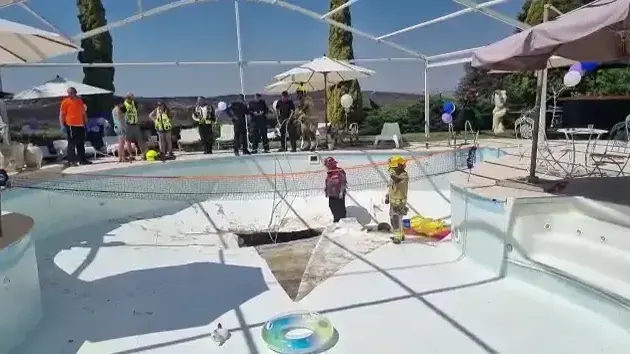Last year, a seaplane from the 43rd Air Force Group broke one of the floats that hang under its wings when it was loading water in the Bay of Pollensa.
The aircraft lost stability and would have crashed had it not been for the skill of the pilot.
It was in that same place, in front of the island of Mallorca, where in March 2003 one of these planes painted red and yellow fell into the sea, whose silhouette has become popular in the skies of Spain, to the point that at Seeing it, everyone wonders where the fire is.
Two crew members died in that incident, the last of a list of 15 in the 51 years that this unit attached to the Air Force and dependent on the Ministry of Ecological Transition, heir to the former Department of Agriculture, has been operating.
One death is too many, but 15 in half a century are not that many for a high-risk mission: they fly very low, between ravines and cliffs, dodging columns of smoke and the eddies and turbulence produced by the wind between the mountains and that They feed the fires themselves.
The planes bought by Spain do not carry weather radar or autopilot.
Its sensors are the eyes and its computers are the brains of the crew.
“Loading at sea, between waves, is more complicated than doing it in a swamp”, explains an experienced pilot, to illustrate what happened a year ago.
Except if, as is happening now, the drought has emptied the reservoirs and it is not known if there is enough depth to jump into the water.
the
jars,
as they are popularly called, they do not need much - only 50 centimeters.
In 12 seconds, gliding across the surface at 70 knots (130 kilometers per hour), they fill a 6,000-litre tank, without the help of any absorption motor, just by force of inertia.
But from the air it is difficult to measure the depth and, to avoid surprises, they have had to do without some unsafe branches of the swamps.
Pilots have enough to calculate how to get out of the reservoir, often surrounded by mountains, loaded with six tons of weight.
In the fire season, between June 1 and October 31, vacations and permits are suspended and the 144 troops stationed in Torrejón de Ardoz (Madrid) are deployed to six bases from which they cover the entire peninsular territory: Santiago de Compostela, Salamanca, Badajoz, Malaga, Zaragoza and Pollensa.
In the Canary Islands there is no permanent detachment.
If necessary, it travels from Malaga and is ready to act in five and a half hours.
Group 43 has 18 Canadair aircraft: 14 older CL-215s and 4 CL-415s, but only ten are operational.
Their average age is over 30 years and they suffer from recurring breakdowns and structural problems, ailments resulting from fatigue, according to military sources.
Teresa Ribera's ministry has launched a program to modernize ten planes, for 24.5 million, and has in its portfolio the purchase of another four, but, while the fleet is renewed, the forest fires do not stop in a summer in which the heat waves follow each other relentlessly.
132 fires to put out
“This year is being the most intense since the unit exists.
Not even the oldest remember anything like it”, admits Colonel Miguel Oliver, head of Group 43. “The toughest and most virulent”, concludes the Minister of Defense, Margarita Robles, who this Thursday visited her headquarters in Torrejón.
The data speaks for itself: until August 15, it has had to go to 132 fires, more than double that in the same period last year (61);
it has made 588 exits to extinguish fires, compared to 255 in 2021;
and it has completed 2,034 flight hours, almost triple what it was a year ago at this time (827).
Defense has offered to adapt four Chinook helicopters, capable of carrying 4.5 tons, for firefighting, and is even studying the use of the A400M aircraft, which could carry 20,000 liters.
None, however, has the versatility of the
jug
to refuel at a nearby reservoir and return to the fire again and again.
It does so from a height of about 30 meters and attentive to what is below: its discharge of water can kill a person or destroy a house.
The
seals
, as they are also called because of their radio callsign, retreat at sunset.
Although night vision goggles have been tested, fire dazzles pilots and power lines are a difficult trap to detect.
That does not mean that during the night they are idle.
The
invisible,
mechanics and maintenance personnel, are busy checking the planes so that they are ready at dawn.
Colonel Oliver is proud of all his subordinates, but he is not fooling himself.
"The great fires are not extinguished from the sky, you have to put your foot on the ground to put an end to them," he warns.
Minister Robles thanks them for their work and asks them to take care of themselves.
There is no time for more.
Spain burns on all four sides.
On a shield is the unit's motto: "Turn off... And let's go!"
50% off
Subscribe to continue reading
read without limits
Keep reading
I'm already a subscriber









